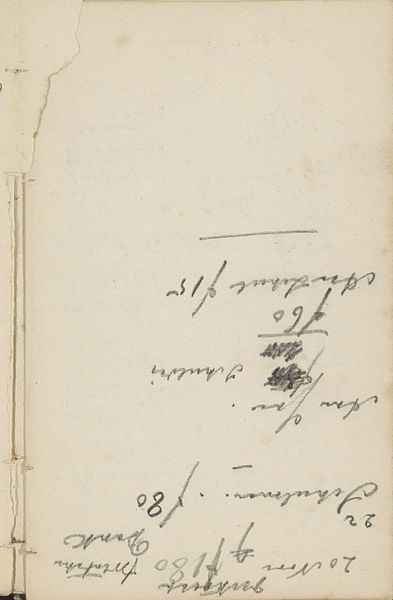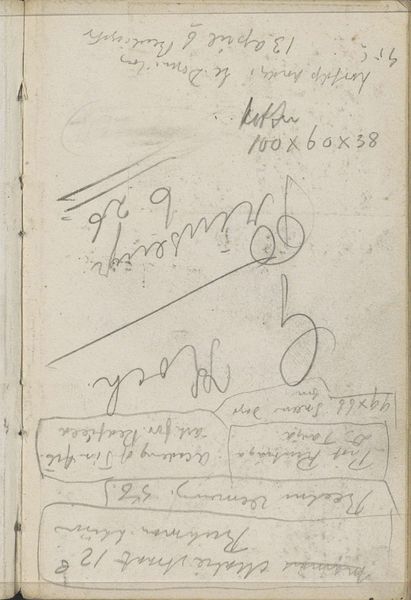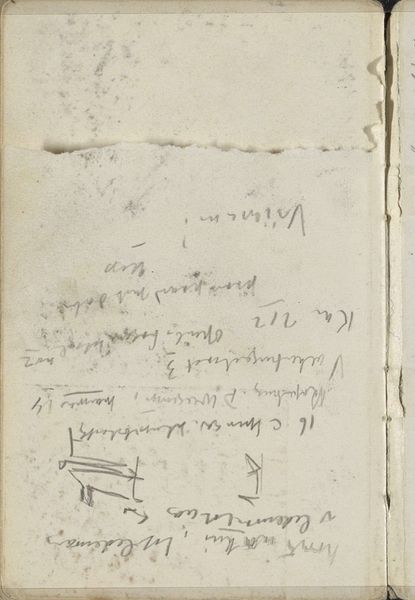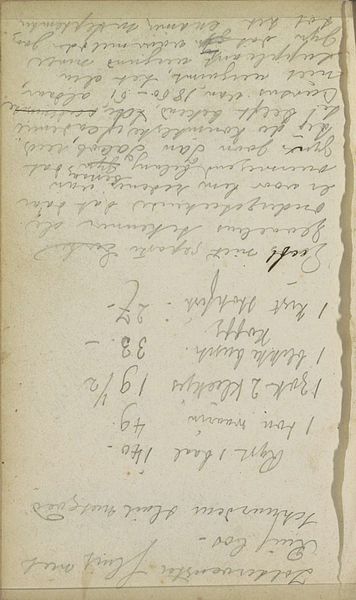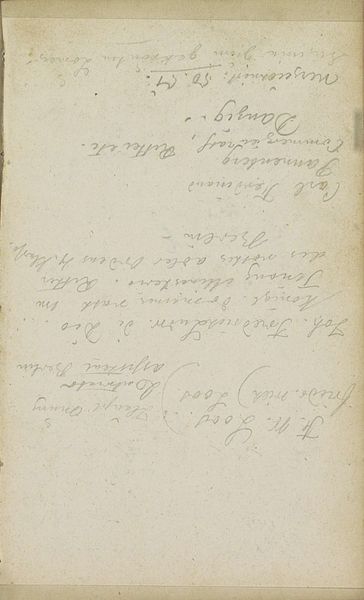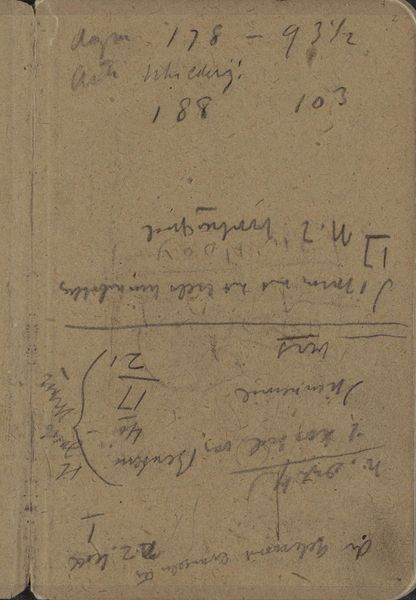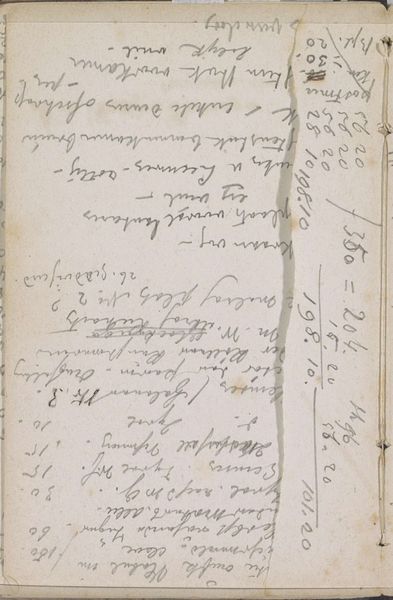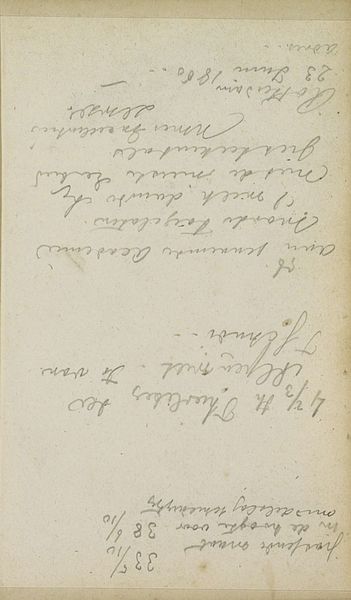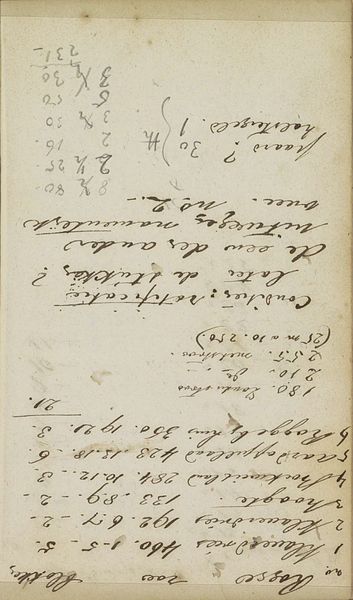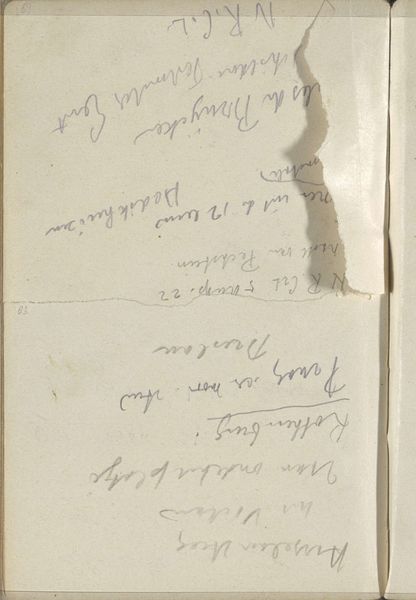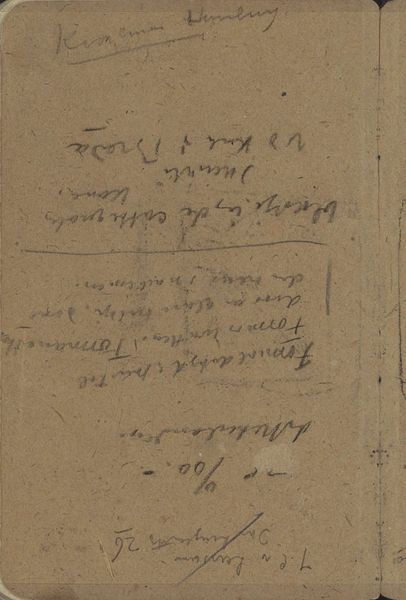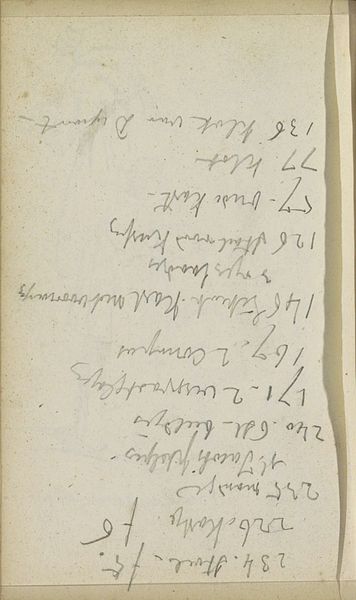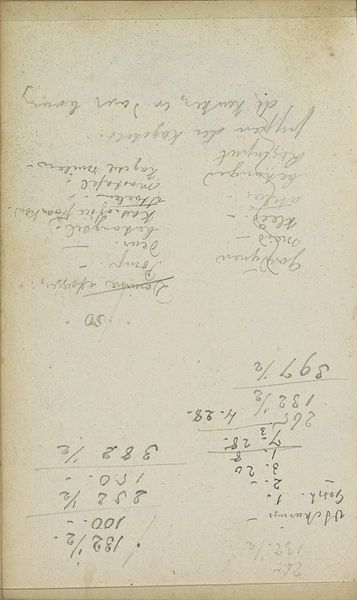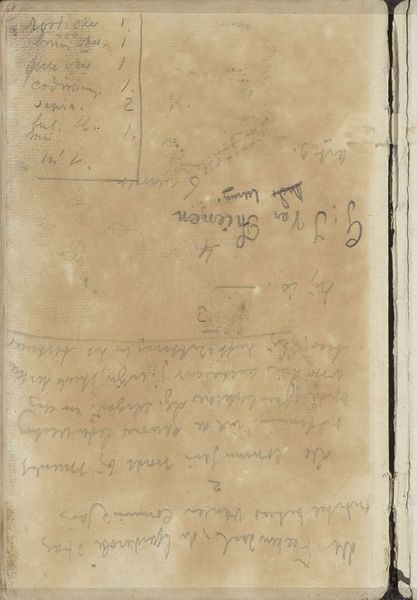
Copyright: Rijks Museum: Open Domain
Editor: So, this is "Annotaties" by George Hendrik Breitner, created between 1907 and 1909. It’s a pencil drawing on paper, part of the Rijksmuseum collection. It gives off this intimate, almost private vibe, like we're peering into the artist's personal sketchbook. All the handwritten notes seem so faded, like echoes from another time. What stands out to you when you look at it? Curator: The fading quality you mention is precisely where the power lies. It’s not just aged paper; it’s cultural memory. Breitner’s scribbles, addresses, annotations… they’re like whispers carrying the weight of a bygone era. Consider what these notations represented to Breitner himself. They weren't meant for public display. Does that change our understanding, do you think? Editor: Definitely. It feels more authentic somehow, like uncovering something raw and unfiltered. Seeing these almost random notes, like an address for "Hirsch-Apotheke" in Munich next to sizing numbers and “Curella a pulver,” what I imagine could be ingredients or medicines from the apothecary. But beyond that, what does it really tell us about Breitner, or about that time period? Curator: Well, consider the placement. These fragments offer us clues, not conclusions. Breitner, working during a period of rapid urban expansion, was keenly aware of capturing fleeting moments, almost like memories themselves which are inherently fragmentary. The drawing itself mirrors that; not a finished piece but an impression, an idea taking shape. The handwriting too evokes a personal language, hinting at the culture surrounding medicinal ingredients like "Curella a pulver", indicating possibly treatments or recipes typical for that place and period. We can analyze those elements through the lenses of anthropology, see? How might this impact your initial view of the sketchbook's intimacy now? Editor: That's a fascinating way to look at it! I hadn't considered how the fragmented nature itself is part of the meaning, how those simple hand written addresses and calculations provide insights. I appreciate now that it reveals a deeper truth about how memory works and reflects those moments. Curator: Exactly. The drawing serves as a symbol of cultural continuity but, in its simplicity, we are reminded about the importance of visual analysis to unlock history. I think next time you visit a museum, consider what has been left behind, what memories might be hidden beneath the surface of each work!
Comments
No comments
Be the first to comment and join the conversation on the ultimate creative platform.
